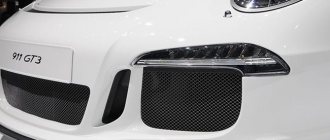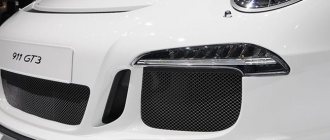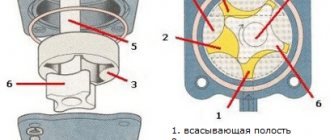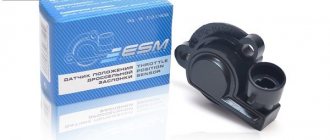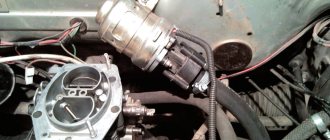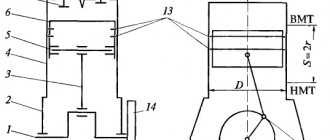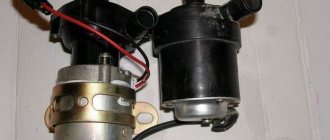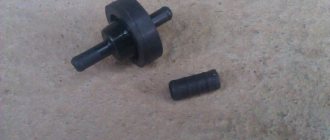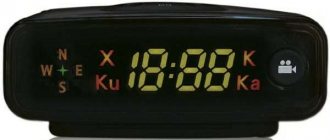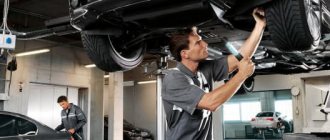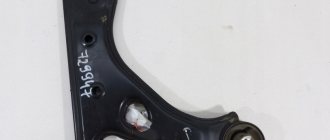The army of people who like to improve their car is numerous, and there are many fans of internal tuning, as well as supporters of changing the car’s exterior beyond recognition.
Among the body elements that largely determine the appearance of the car is the radiator grille, which is usually associated with the character of the car - good-natured or aggressive, sporty or extravagant.
But few tuning fans think that the radiator grille is not just part of the overall design. It also plays an important practical role, protecting the engine compartment (and the radiator itself in the first place) from various troubles. A protective mesh for the radiator grill helps to cope with these tasks better. But few people know about these additional car accessories. We decided to fill this gap.
Why install a protective mesh?
As you know, a car radiator is quite vulnerable to external threats, and the main barrier to various debris, including biological, is the radiator grille. But the problem is that in most cases, the cells of this exterior element are quite large in size, designed to hold objects of similar dimensions, such as branches or stones. As for small debris and insects, the standard device is useless. That is why the question of whether it is necessary to put a mosquito net on the radiator grill is purely rhetorical.
And if the harm from insects to the radiator lies only in the difficulty of cleaning it (everyone who has ever tried to do this knows what we are talking about), then small solid particles can cause serious damage to the car’s cooling system - just remember the saying about water and stone. However, honeycombs clogged with midges and other debris can significantly worsen the heat exchange between the radiator and the incoming air, which will negatively affect the operation of the cooling system.
So additional protection of the radiator from insects is needed. And the only effective way to do this is to install a mesh with small cells. A factory-made radiator grille that meets these requirements is very rare, so it is practiced to install a home-made or factory mounted element, which is much easier to clean from debris.
Why did I need a radiator mesh?
I know, I know: all modern cars are produced without any nets. Evil tongues say: if it’s not, then it’s not necessary. But I don’t agree with this: after all, the same dealers like to offer “unnecessary” grids as an option - for a fee. And if so, then the car manufacturer does not object to such modifications.
Why do you need a mesh? Have you ever had to wash your windshield after a long drive? Neither wipers, nor oncoming air flow, nor heavy rain protect it from adhering flies and mosquitoes, tree buds and fluff particles. And the radiator, invisible to the eye, meekly takes on all this dirt - and no rainfall can clean it. The poplar tribe is especially trying, capable of filling all its cells with its “cotton wool”.
A separate torture for the radiator is pebbles and other hard objects flying towards you, with which our roads are littered in sufficient quantities. We shudder when such an object hits the glass, but we don’t think about what the radiator feels like during such impacts. And when winter comes, various road reagents begin to attack the radiator, ready to devour anything.
In short, I need the mesh in order to think less about repairs to the cooling system. I want my car to drive and not sit on lifts.
Advantages and disadvantages of a protective mesh for the radiator
Modern cars are equipped with radiators whose dimensions are quite large - so much so that their lower part goes far down. The radiator grille is usually installed between the headlights, covering only the upper part of the radiator, and then only from large objects. The lower part, located at the level of the bumper, often turns out to be frankly poorly protected, and not only a mosquito, but also a rather large stone that jumped out from under the wheels of the vehicle in front could easily fly in through large gaps. This results in microscopic defects that increase the natural loss of coolant. And if you add honeycombs clogged with midges flying into the headlights, you get a completely bleak picture, reflected in the overheating of the power unit.
So the influence of the radiator mesh on the cooling system from this point of view can be called very positive. It is worth noting other positive points:
- unlike the standard plastic radiator grille, the mesh is made of metal, which is not afraid of stone impacts - the wear of this element is much less than the grille;
- using a Karcher to clean the mesh from debris is much easier than the grate;
- the protective mesh has virtually no effect on the vehicle's throughput - air will flow to the radiator at the same speed;
- many models of grids have a built-in curtain, which makes it easier to start and warm up a cold engine in winter;
- Finally, such a car accessory can also perform a decorative function, allowing you to make the exterior of the vehicle somewhat exclusive.
There are few negative points. The most common problem is difficulties in selecting a mesh for a specific car model. The second negative point is the difficulty with installation: not all car owners are fluent in plumbing tools, and if the mesh is installed poorly, backlash may occur, especially at high speed, which will manifest itself as rattling and other unpleasant sounds.
Installing a mesh on the radiator grille - choosing color and material
Aluminum is a universal option if it is made with “perforation”. It can be chrome plated, painted and bent to give the desired shape. This metal withstands mechanical and chemical influences well, and if dents appear, it will allow you to return to its original shape without removing the protective screen.
Non-ferrous metals are higher in cost, but they also look “more expensive”. With use, it acquires a pleasant “aging” effect. If this is not desired, these materials can be refinished with wire brushing. One of the pleasant properties is that they are resistant to rust.
If you decide to install the radiator mesh yourself, the ideal choice is polymer products. The advantages of this choice are described below:
- lends itself well to cutting with scissors or a hacksaw;
- the edge does not need to be further processed;
- the material holds its shape stably;
- polyurethane tolerates UV rays, temperature changes and water well.
The disadvantages include low strength (a stone when driving at speed can pierce the part).
Chrome parts are popular in tuning centers. Black specimens also look impressive. Brass and copper options are suitable as a solution only for some body colors. You can paint the part in the main shade of the car or choose a contrasting solution - the choice is up to the car owner.
Types of protective nets
The wide variety of mesh screens designed for additional protection of the radiator is due to the use of various manufacturing technologies for these auto accessories, as well as a wide range of modern materials used in their manufacture. It is not surprising that today it is possible to choose this decorative element that ideally matches the color scheme, shape and size of your car. Let's take a closer look at all of the above factors.
Preparation method
Both factory meshes and those manufactured by large and very tiny tuning companies use a number of different technologies:
- the welding method is characterized by a mesh pattern that has a clearly visible volume even from a distance;
- woven mesh is produced using a technology similar to textile production, but here, instead of threads, the object of weaving is metal wire of small diameter;
- the twisted method requires the use of special machines that make a lattice in the form of a honeycomb - with ideal hexagons;
- casting technology is used to produce meshes from polymer materials;
- The expanded metal method is a technology for cutting slots in sheet metal using a powerful press. If necessary, the mesh can be stretched to form a diamond pattern instead of a square one;
- The chain-link technology involves weaving individual wires in a certain way.
All of these methods, except the last one, make it possible to obtain the output mesh with a rigid spatial structure, which is characterized by a constant geometry. The chain-link is characterized by the presence of transversely located rows of wire, which can move within certain limits, so their fastening requires a certain skill.
As a rule, the decorative mesh, as a result of separation (cutting) from the roll, has sharp edges, which should be processed before installation so as not to damage the body elements or bumper. Sometimes, for these purposes, the edges are wrapped with insulation of suitable diameter, removed from the cable.
Material of manufacture
There are three large groups of materials from which protective and decorative elements for the radiator grille are made:
- polymers (the most worthy representatives of the class are polypropylene, polyethylene, nylon);
- steel (regular with chrome plating or stainless);
- non-ferrous metals (copper, various aluminum alloys, brass).
If we consider the mesh from the point of view of ease of installation, then preference should be given to polymer products:
- they are easily cut with a hacksaw or scissors;
- usually the edge of the protective grille does not require additional processing;
- the material retains its original spatial shape under any conditions;
- modern plastic products are absolutely resistant to ultraviolet rays, temperature changes and moisture.
Among the main disadvantages are the relatively low strength - when exposed to a large stone crashing at high speed, defects may occur and the mesh may be damaged.
Aluminum mesh for radiator protection is considered more versatile, especially if it is made using perforated technology. Among its advantages are the possibility of painting and using chrome plating technology, ease of bending to give the desired shape. Aluminum is more resistant to mechanical stress and aggressive environments. If dents occur, they can be corrected without removing the protective screen.
Brass and copper products are more expensive, but their decorative properties are much higher. Over time, such additional grilles acquire an indescribable touch of antiquity. If desired, they can be easily cleaned with metal brushes; they are not afraid of corrosion.
When choosing a mesh material, make sure that the product is compatible with the standard radiator grille and other nearby body elements. If you are unable to determine whether the mesh is discordant with the exterior of the car, seek help from specialists.
Color solution
Most tuning studios prefer chrome parts. It is not surprising that such grids are the most common. However, a universal black product will look no less attractive. Brass screens or copper meshes will not match any color.
Many car owners prefer to paint the grille in the main color of the car body, but there are also fans of contrasting solutions. In a word, the color of the decorative mesh on the car radiator grill can be any, depending on your preferences and tastes.
Painting the mesh
If you were unable to choose the mesh material to match the color of the car, then there are 2 options left:
- install unpainted aluminum mesh;
- take aluminum or plastic material and repaint it in the desired color.
Varnishes and paints in aerosol cans
In the first case, you will receive a minimum of worries, but over time, the aluminum will oxidize and darken, which will ruin the appearance of the car, especially when installing the grille externally. Therefore, it is better to spend 2 hours and apply paint to the element according to all the rules. To do this you will need:
- white spirit or other degreaser;
- primer for aluminum or plastic;
- paint of the desired color;
- protective varnish;
- antistatic wipes.
Note. It is assumed that you do not have a compressor and a spray gun, and primer, varnish and paint are purchased in aerosol cans.
Painting the mesh from a spray can
For ease of processing and painting, it is best to hang the mesh on a wire from the ceiling. A less aesthetic option is to place it on the floor covered with old newspapers. Then the process of applying paint will be delayed, because the element will have to be turned over. The procedure is as follows:
- Using wipes and white spirit, thoroughly degrease the mesh material.
- Shake the primer in an aerosol can and apply 2 coats with a break of 10-15 minutes. Hold the container vertically at a distance of 20-30 cm from the surface to be painted.
- Apply a base coat of paint, wait 15 minutes and repeat the operation. Make sure that there are no drips, and that each subsequent strip, when applied, half overlaps the previous one.
- After the base has dried, coat the mesh with three layers of protective varnish at intervals of 10 minutes.
Important point. Check the drying time of all coloring compositions according to the instructions on the packaging.
Installation using a glue gun
When the paintwork has completely hardened, proceed to install the mesh on the car, as described in the previous sections.
How to make and paint an internal protective mesh - video
You will have to spend from 2 to 8 hours making and installing a protective mesh with your own hands, depending on the installation method you choose and the difficulties with removing the bumper. How much money you can save depends on the make of the car and the price of the finished kit for it. Add here the cost of installing mesh elements at a service station. But, by taking on the work yourself, you can choose the appropriate material and repaint it if necessary. And the procedure is not so complicated that you need to go to a car repair shop for this service.
How to make and apply removable tinting on car windows
How to make a subwoofer for a car with your own hands
Mesh screen installation technology
If your plans include installing a protective and decorative mesh on the radiator grille, you should decide on its location. This can be an external or internal arrangement of the mesh screen, with each method characterized by its own set of advantages and disadvantages.
In particular, the external installation method allows for additional tuning of the car’s exterior. If the mesh screen is located internally, it will practically not be visible behind the radiator grille, and in some cases this will require removing the bumper, and for many foreign car models this is a problem.
For the mesh to perform protective functions, the cell size must be within 2.5-5.0 millimeters - this is a reliable barrier to small stones, debris and insects, and at the same time, air will penetrate to the radiator fins with virtually no interference.
Let's look at the main differences between internal and external methods of installing a mesh screen.
Mounting on top of the radiator grille
If previously a car had only one monolithic grille, recently it has often been practiced to install protective elements consisting of two parts: one located in a regular place, the other behind or under the bumper.
Most car brands practice placing a nameplate in the middle of the grille, which will have to be removed during external installation.
The procedure for externally installing a mesh to protect the radiator in the bumper consists of the following steps:
- determination of the geometric dimensions of the mesh screen. The best and most accurate way is to use an overlay sheet of thick paper or cardboard and transfer the outline of the hole with a pencil;
- using the resulting template, a mesh of the required size and shape is cut out of the rolled material using metal scissors;
- if the edges of the mold are too sharp, it is necessary to select a cable whose inner diameter of the insulation coincides with the outer diameter of the mesh wire. Using a utility knife, we cut the insulation and place the resulting hollow PVC tube on the edges of the mesh along its entire perimeter;
- the resulting structure is attached to the radiator grille in any convenient way.
If you plan to install parking cameras in the area of the mesh screen, a hole of the appropriate diameter should be cut in the places provided for this.
Installation of the mesh from the inside
In this case, the first two or three stages are completely identical, but there are some nuances. In particular, only in every fourth foreign car the radiator grille is removed from the outside. In other cases, to install additional radiator protection, you will have to dismantle the bumper, which significantly complicates the procedure.
If you succeed, take a close look at the bumper: most likely, on its inside there are standard fasteners and other structural elements to which our mesh can and should be attached.
Why do you need a mesh in the bumper?
The air in front of a car radiator can only be clean in an ideal situation; this rarely happens. A typical case is when the bumper, and therefore the radiator, cuts through a suspension of dust, wet dirt, rubble and numerous insects of different sizes. And at high speed.
On the subject: How to understand that an engine valve has burned out
The mesh will take on a lot, leaving the radiator relatively clean because it is unlikely to keep out dirt and insects, unless they are the size of a bird.
But the mesh saves you from stones that can damage the radiator. Even if a small stone does not harm the tubes through which the liquid passes, they can crush the additional aluminum cooling fins and ruin the aerodynamics.
If even a small thing passes through the mesh cells, the trajectory and force of the impact will be significantly changed.
Mounting methods
Now let’s talk about the most reliable methods of attaching a protective structure, which in any case will be subject to significant wind loads.
There are several methods for attaching the mesh to the radiator grille:
- using self-tapping screws. In this case, it is necessary to use washers of large diameter, which increase the contact surface. Before tightening, it is advisable to slightly heat the screws themselves with a household hairdryer;
- by fusion method. In this case, the metal wire frame around the perimeter is very hot and then quickly pressed into the standard plastic grille. Note that this option is very reliable, but problems will arise when dismantling the structure;
- using clamps - the simplest and least demanding method for tools. The clamps should be selected to match the color of the mesh itself, tightened exclusively on the inside;
- glue gun. One of the fastest methods. Requires careful and uniform distribution of glue along the entire perimeter of the protective screen;
- If standard holders are available, the screen is mounted under the elements of the radiator grille by snapping the holders into the seats. Occurs infrequently.
Most often in practice, self-tapping screws are used; in second place in popularity is fastening with clamps. Sometimes transparent fishing line is used, but only if all other methods are not available.
How to install an insect screen on a radiator grille
Such spare parts are made from chrome or stainless steel, polymers (for example, polypropylene) and non-ferrous metals (brass, copper, etc.) Various technologies are used to manufacture products:
- welded (volumetric effect);
- woven (wire woven like threads in fabric);
- twisted (the shape of a honeycomb - special equipment is required for production);
- cast (used for the manufacture of spare parts from polymer);
- expanded metal (slots are cut out on a sheet of metal using a press);
- “chain-link” (pieces of wire are intertwined using a certain method).
When installing the mesh on the radiator, pre-treatment of the edges is necessary. Otherwise, there is a risk of damaging the bumper and body elements. For additional cable insulation is glued to the perimeter protection.
Types of mesh for radiator protection
It is believed that it is quite enough to sometimes wash the entire radiator package, but this is quite difficult on cars tightly packed with equipment in the engine compartment, and therefore expensive.
Often, without disassembling the entire structure, it will not be possible to wash them at all. In order to somehow reduce pollution, nets are installed as additional equipment, at the risk of losing the warranty.
Factory
It is somewhat incorrect to call industrially produced products factory-made. A factory is a car manufacturer. He will not create problems for himself by producing tuning items that impair cooling, so high-quality, well-made and well-painted products for a given car model are considered as such. They are made to size and are easy to install.
The noble design allows you to install protection even outside the main false radiator grille. Some may think that the appearance of the car has improved, but more often externally mounted meshes are made only for the lower part of the bumper, where they are not so clearly visible, and more stones fly in this area.
